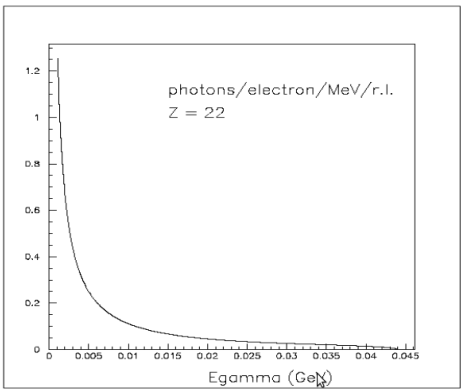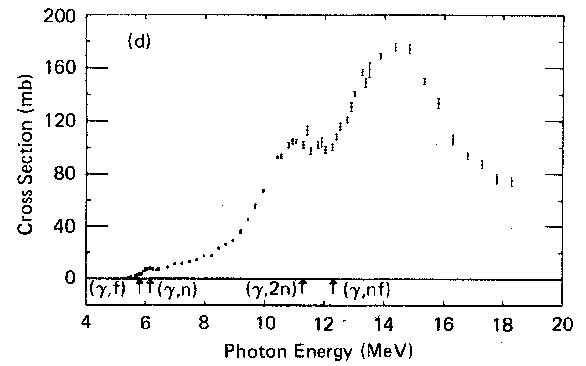Difference between revisions of "Counts Rate (44 MeV LINAC)"
Jump to navigation
Jump to search
| Line 31: | Line 31: | ||
==steps together...== | ==steps together...== | ||
| − | <math>0.1\ \frac{\gamma 's}{(e^- | + | <math>0.1\ \frac{\gamma 's}{(e^- \cdot MeV \cdot r.l.)} \times 3.48 \cdot 10^{-4} r.l. \times 10\ MeV \times 0.47 \cdot 10^{13} \frac{e^-}{sec}=1.64 \cdot 10^{9} \frac{\gamma}{sec}</math><br><br> |
Revision as of 04:34, 18 May 2010
LINAC parameters used in calculations
1) pulse width 50 ns
2) pulse current 50 A
3) repetition rate 300 Hz
4) energy 44 MeV
Number of electrons/sec on radiator
Number of photons/sec from radiator
bremsstrahlung
in (10,20) MeV region we have about
0.1 photons/electrons/MeV/r.l
radiation length
r.l.(Ti) = 3.59 cm
radiator thickness = 12.5
steps together...
Collimation factor
Collimation factor is
4-6 % of total # of photons (Alex, GEANT calculation)
then, incident flux on target is
Number of neutrons/sec (yields)
photonuclear cross section for
in (10,20) MeV region the average cross section is:
130 mb
target thickness,
Target thickness = 1 cm:
neutrons per fission
2.4 neutrons/fission
steps together...
Worst Case Isotropic Neutrons
Let's say we have:
radius detector = 1 cm
1 meter away
fractional solid angle = <= geometrical acceptance
finally we have
Therefore, this experiment is do able.

